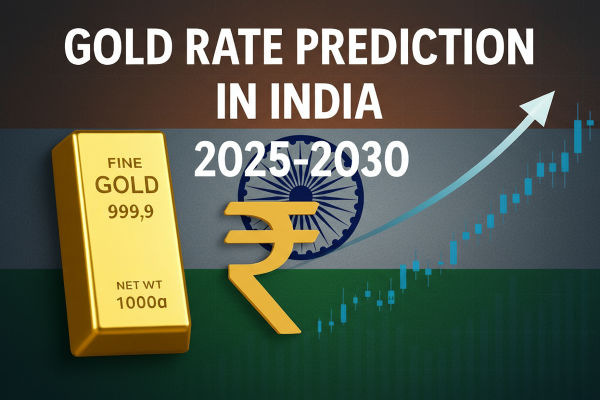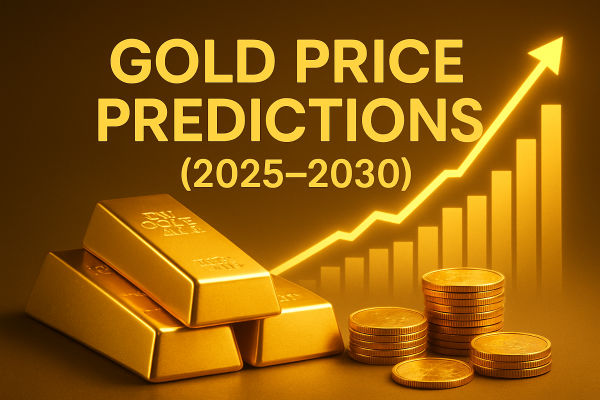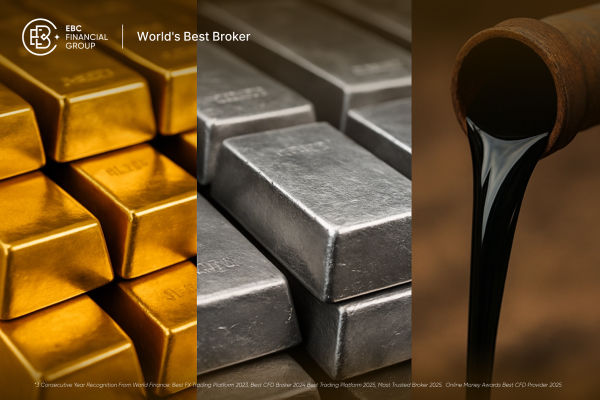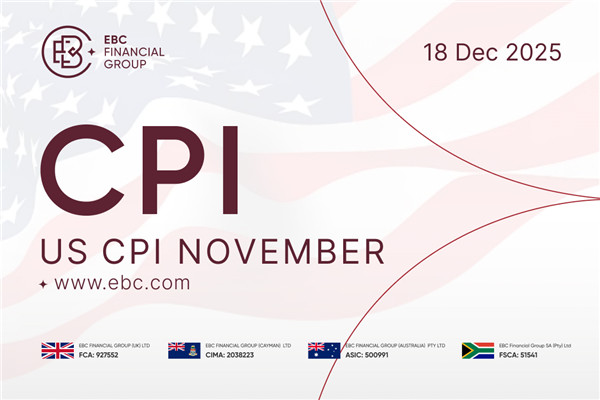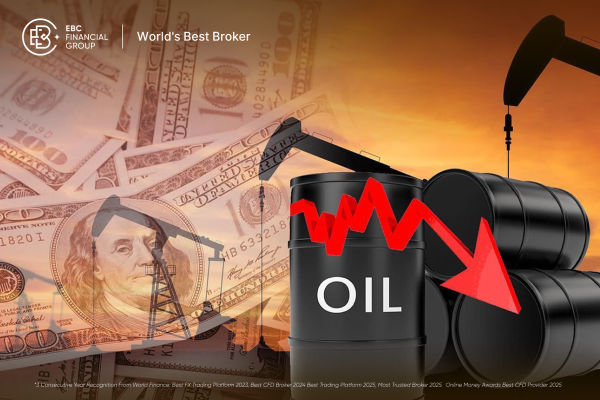As of early November 2025, the global spot price of gold is over USD 4,000 per troy ounce, which is approximately ₹120,000–₹125,000 per 10 grams in India, subject to daily fluctuations of the rupee and local premiums.
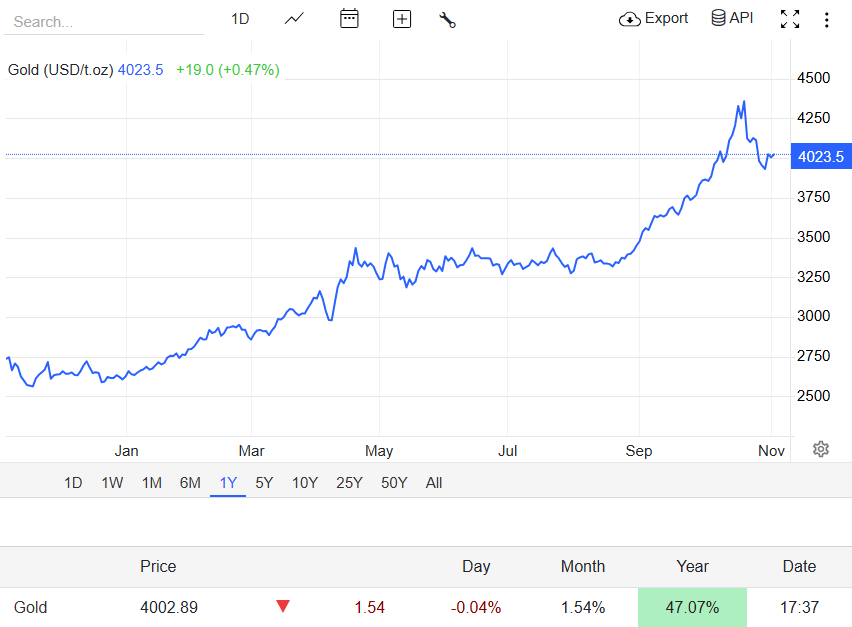
Major banks and research houses remain bullish in the near term, with Goldman Sachs, Morgan Stanley, and HSBC all raising their 2026 gold price forecasts. The upgrades reflect continued central bank buying, steady ETF inflows, and cooling expectations for further Fed tightening.
That backdrop suggests a reasonable base-case path for gold in India of roughly ₹1.2–1.37 lakh per 10 g by 2030, with upside to the ₹1.5–2.0+ lakh range under a strong bull scenario and downside into the low-₹1.0 lakh area if the dollar re-strengthens and risk appetite returns.
Where Does Gold Sit Today? (November 2025)
| Category |
Latest Data / Trend (as of Oct 2025) |
| Global Spot Gold |
Trading in low-to-mid USD 4,000/oz range (intraday fluctuations) |
| Indian Retail Prices (24K) |
Around ₹1.20–1.23 lakh per 10 g, record highs near ₹1.22 lakh in Oct 2025 |
| RBI Gold Reserves |
~880 tonnes by mid-2025; gold’s share in FX reserves increased due to valuation gains and ongoing central-bank buying
|
| ETF & Retail Flows |
Record ETF inflows in Sept 2025; AUM at new highs with strong urban investor demand [1]
|
These are the core facts we'll use to build forecasts below.
How Analysts See Gold in the Near Term (2026)
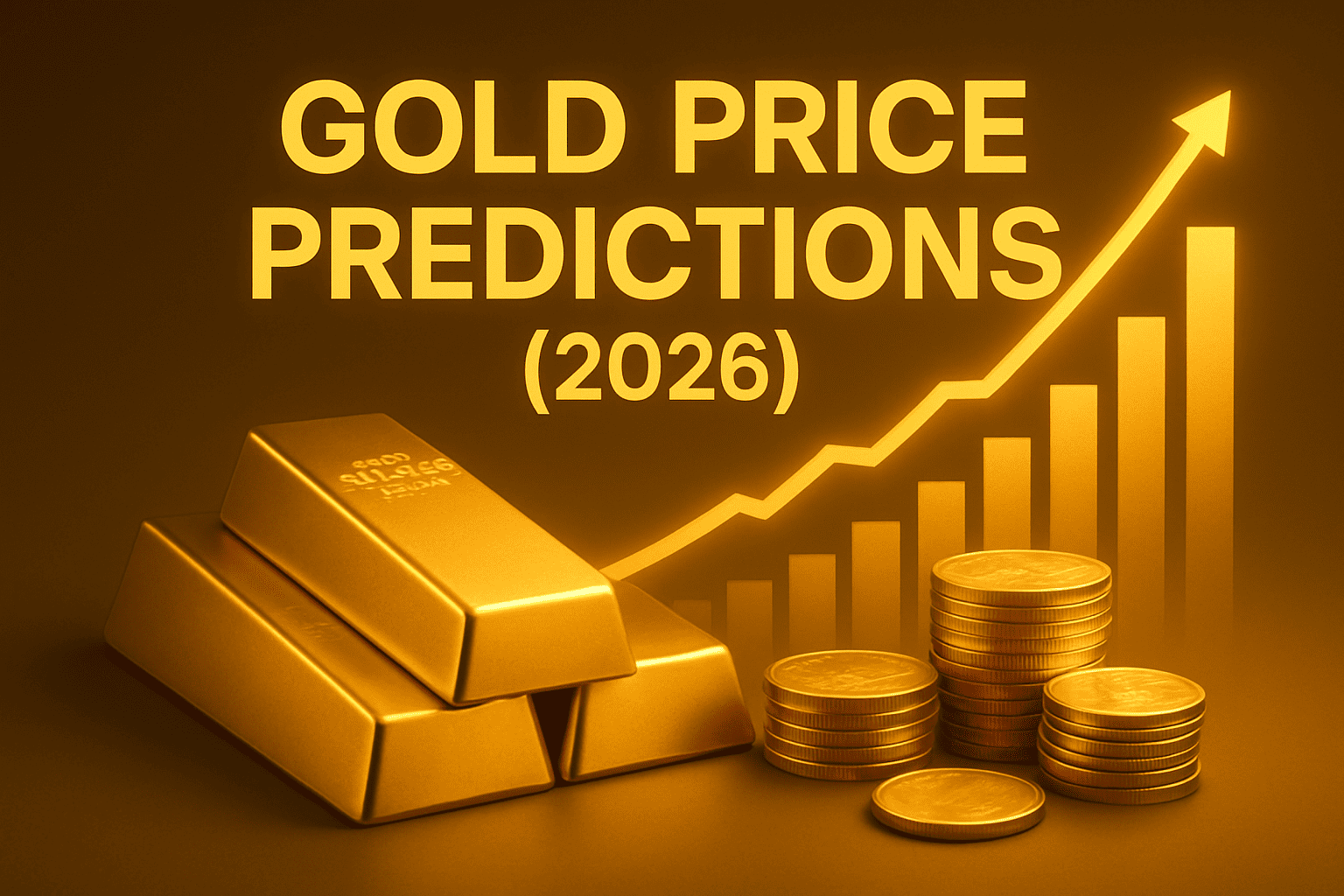
As mentioned above, several global banks updated their gold views in late 2025:
Goldman Sachs recently raised its near-term gold target, projecting prices to approach around USD 4,000 per ounce by mid-2026, supported by continued central bank purchases and robust ETF inflows.
Morgan Stanley and several other institutions set mid-2026 targets closer to USD 4,500 per ounce, with some desks anticipating even higher levels under favourable risk conditions.
Meanwhile, HSBC outlined a particularly bullish scenario, suggesting gold could climb toward USD 5,000 per ounce in an extreme cycle driven by confidence shocks and surging safe-haven demand. [2]
These bank forecasts explain much of the market momentum and provide sensible anchors for our India conversions below.
Forecast Methodology: How to Convert Global Targets Into INR/10 G
In short, analysts publish USD per troy ounce targets; to show what that means for Indian buyers, we must convert USD/oz → INR/10 g using two variables:
USD/oz → price per gram: 1 troy ounce = 31.1035 grams. So price per gram = (USD_per_oz ÷ 31.1035).
Convert USD to INR: multiply the per-gram USD price by an assumed USD/INR exchange rate for that year, then multiply by 10 to get INR per 10 g (the common Indian retail metric).
Below, we present three simple scenarios (Bull / Base / Bear) with stated USD/oz and USD/INR assumptions. These are possible gold rates that reflect plausible macro outcomes.
Gold Rate Prediction 2025–2030 in India
Current USD/INR around ₹88.7–89 (early Nov 2025 spot). Scenarios assume different rupee paths.
USD/oz paths are drawn from bank forecasts and stress cases (Goldman, Morgan Stanley, HSBC) and extended reasonably through 2030.
| Year |
Base case (moderate bull) |
Bull case (strong safe-haven / central-bank buying) |
Bear case (dollar strong, risk on) |
| 2026 |
₹120,180 per 10 g |
₹147,900 per 10 g |
₹106,900 per 10 g |
| 2027 |
₹124,490 |
₹162,040 |
₹106,030 |
| 2028 |
₹128,667 |
₹175,414 |
₹105,036 |
| 2029 |
₹132,718 |
₹190,204 |
₹103,911 |
| 2030 |
₹136,641 |
₹204,607 |
₹102,657 |
(How to read this: base-case 2026 ≈ ₹120k/10 g. Meaning if gold trades near USD ~4,200/oz and USD/INR is ~₹89, the implied local price is ~₹1.20 lakh per 10 g.)
What Each Scenario Implies? Narratives Behind the Numbers

1) Bull Case (↑ to ₹1.5–2.0+ Lakh /10 G by 2028–2030)
Triggered by: aggressive central-bank buying, surprise political shocks that dent faith in Treasuries (driving institutional flows into bullion), persistent low/negative real yields in the U.S., and strong retail ETF uptake in India/China.
Market structure amplifies moves (crowded bond markets shifting into gold). Analysts such as HSBC and Morgan Stanley include such pathways. [3]
2) Base Case (Gradual Rise to ₹1.36 Lakh by 2030)
Triggered by: Fed easing in 2026 that lowers real yields moderately, continued but measured central-bank accumulation, and consistent ETF demand.
Local rupee behaviour is stable or modestly appreciating, so INR gains partially offset USD price rises. This is the scenario with the highest probability (40–50%).
3) Bear Case (Prices Fall Back Toward Low ₹1.02–1.07 Lakh by 2030)
Triggered by: a sustained global risk-on cycle, a much stronger U.S. dollar (higher real yields), a slowdown in central-bank purchases and reduced ETF flows.
In India, this would probably align with the strength of the rupee and reduced demand for festivals/jewellery, along with policy actions to limit imports. This scenario is plausible if global growth surprises positively.
Specific Constraints & Price Drivers to Monitor for Investors
For Indian investors, the headline USD/oz is only half the story. These India-specific items materially shift the INR price:
USD/INR moves: A weak rupee amplifies INR gold prices. Monitor intervention cues and trade-policy headlines. Daily volatility in USD/INR can swing INR/10 g by thousands of rupees.
Import duties / GST & policy: Any government change (e.g., import liberalisation or duty increases) will shift retail spreads and demand.
Festival/wedding season demand: Season spikes can push local premiums above global conversions.
Domestic alternatives & liquidity: India's gold ETF AUM reached unprecedented inflows in September 2025.
How Should Indian Investors Position Themselves?
1) Sovereign Gold Bonds (SGBs): best for long-term savers who want tax efficiency
2) Gold ETFs / Gold mutual funds: best for tradability and small ticket sizes
3) Physical gold (jewellery, coins and bars): cultural demand and consumption value
4) Gold savings & fractional platforms: convenient for small, recurring buys
5) Hedging & loans against gold: corporate treasuries and serious investors
Risks and Challenges to Gold Price Growth
Stronger Indian Rupee: Appreciation of INR due to trade surpluses or foreign inflows could reduce domestic gold price inflation
Monetary Tightening: Aggressive RBI interest rate hikes aimed to control inflation could dampen demand for non-yielding gold.
Supply Gluts or Recycling: Increased gold recycling or greater export from major gold producers may ease price pressures.
Cooling Demand: Changes in cultural purchasing habits or the appeal of alternative investments might diminish physical demand.
Realistic Gold Expectations for Indian Investors

1. Short Term (Next 6–12 Months):
Continued volatility but a bullish bias. Many large houses are expected to experience increased prices through mid-2026, fueled by central bank purchases and declining U.S. real yields, suggesting potential local price risks to the upside in the short term.
2. Medium Term (2026–2028):
The fundamental scenario indicates slight gains in INR terms (refer to the table above), yet gold remains reactive to significant macroeconomic disturbances.
Should central banks continue purchasing, and the dollar depreciates, India may experience burdensome import costs but significant returns for investors.
3. Long Term (2030):
Gold still functions as insurance and portfolio ballast. Expect steady demand from central banks and households; price level will depend on monetary policy, geopolitical trends and structural reserve diversification.
Frequently Asked Questions
1. Will Gold Prices in India Reach ₹2 Lakh per 10 Grams by 2030?
Many experts forecast prices approaching or exceeding this level by 2030, driven by inflation, demand, and safe-haven buying.
2. How Does the U.S. Dollar Affect Gold Prices in India?
Gold is globally priced in USD. Thus, a weaker dollar generally raises gold prices in INR due to currency conversion.
3. How Do Festivals Impact Gold Prices in India?
Festive seasons such as Diwali and the wedding period typically drive a sharp rise in gold demand, often resulting in short-term price surges due to increased buying activity.
Conclusion
Over the next five years, gold prices in India are expected to maintain their upward trajectory, supported by persistent inflationary pressures, sustained investment demand, and ongoing global uncertainties.
While short-term price fluctuations and risks of currency appreciation or monetary tightening exist, the long-term fundamentals remain largely favourable for gold as a strategic asset in Indian portfolios.
Investors should remain informed about domestic economic policies, currency trends, and seasonal demand to make savvy decisions in India's dynamic gold market.
Disclaimer: This material is for general information purposes only and is not intended as (and should not be considered to be) financial, investment or other advice on which reliance should be placed. No opinion given in the material constitutes a recommendation by EBC or the author that any particular investment, security, transaction or investment strategy is suitable for any specific person.
Sources
[1] https://www.reuters.com/world/india/indias-gold-etfs-hit-record-10-billion-aum-biggest-ever-september-inflow-2025-10-08/
[2] https://www.reuters.com/world/asia-pacific/hsbc-expects-golds-bull-wave-hit-5000oz-2026-2025-10-17
[3] https://www.reuters.com/business/finance/bofa-hikes-gold-price-forecast-5000oz-2026-2025-10-13/
